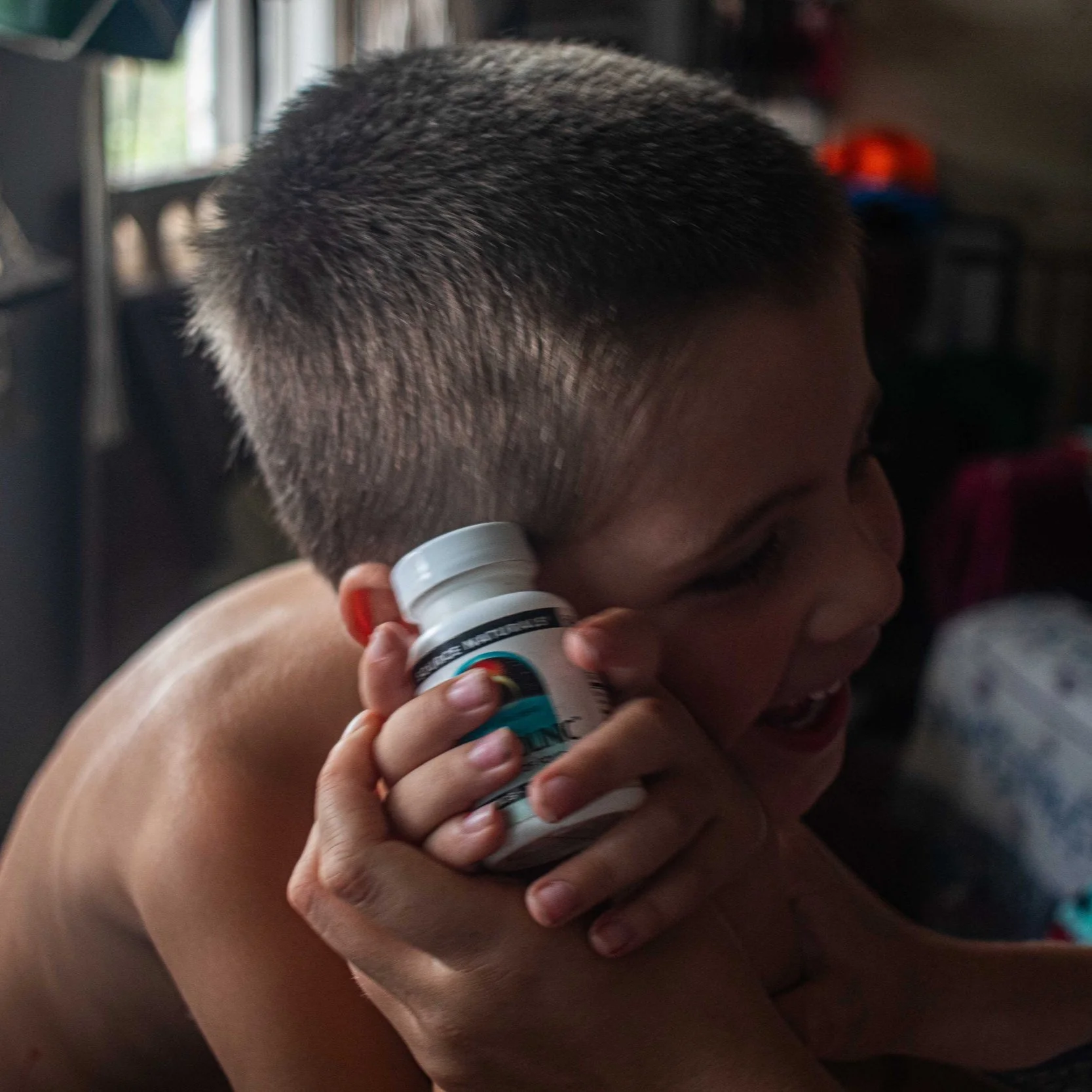How Folinic Acid Helps Children with Autism
Our son, Sawyer, has been visibly non-verbal his entire life. It’s been tough for all of us as he struggles to communicate, often leading to temper tantrums due to his frustration. However, at 4 years old, we started experimenting with "detox" practices, such as adding chlorella, a freshwater algae full of nutrients (not to be confused with cholera, a bacterial disease) to his diet, giving him Epsom salt baths, and introducing DHA supplements (ie. Omega 3). Slowly but surely, we saw changes in his communication. Sawyer spoke his first words, and for the first time, he could communicate his basic needs - he still struggled, but it was a success to us. This small breakthrough made a world of difference in his behavior, his tantrums decreased, and we finally felt like we were connecting.
At 5 years old, we came across a study about folinic acid and its potential benefits for non-verbal children with autism (https://www.nature.com/articles/mp2016168). We decided to try it, and within just one week, Sawyer said his first full sentence: “go to bed.” Until then it had always been “bed” or “night, night” never anything more.
After that he started helping around the house—throwing things in the garbage when asked, picking up his toys when we prompt him to “clean up”, and even helping with carrying pails and jars for milking the goats. Folinic acid seems to have opened up a new world for Sawyer, and we’re eager to see how he continues to develop as we keep supplementing him with it.
What is Folinic Acid?
Folinic acid is a natural form of vitamin B9 (folate) that the body can use more easily than synthetic “folic acid” - often you’ll find foods “fortified” with folic acid in an effort to get more folates into our diets. Folates are critical for brain health and cell growth, but in many children with autism, the body has trouble processing it. In fact, research shows that up to 44% of children with autism have issues with folate metabolism. Folinic acid bypasses this problem by being more readily absorbed into the brain, where it can support functions like speech and cognitive development.
The Connection Between Folinic Acid and Autism
Many children with autism also have problems with their mitochondria, the parts of our cells responsible for creating energy - The Powerhouse of the cell! Studies show that 30-50% of children with autism have mitochondrial dysfunction. When mitochondria don’t work properly, the brain doesn’t get enough energy to function well, which can lead to developmental delays, including speech problems - like Sawyer has.
There’s also evidence that some children with autism don’t have enough folate in their brains. This is where folinic acid comes in. By boosting folate levels in the brain, it helps the mitochondria. With improved mitochondrial function, the brain has more energy for important tasks like learning to speak.
In Sawyer’s case, we believe that folinic acid helped his brain get the fuel it needed. It was as if his brain was finally able to power up, giving him the ability to form sentences and communicate more clearly.
Does Folinic Acid really Work?
Several studies have shown that folinic acid can help children with autism, especially those who are non-verbal. One of the most promising studies gave folinic acid to children with autism and observed noticeable improvements in speech and social interaction. The children in this study were given 2 milligrams per kilogram of body weight per day, with a maximum dose of 50 milligrams a day.
Nearly half of the children who received folinic acid showed significant progress. Some kids even spoke their first words after starting the treatment. In Sawyers case, he went from being mostly silent to using full sentences in just one week.
The study also found that children who took folinic acid were 3.5 times more likely to improve in their verbal communication than those who didn’t. This was a huge finding for us and other families with non-verbal children. Seeing this kind of progress gave us hope that folinic acid might help other children as much as it helped Sawyer.
How Folinic Acid Helps:
For many non-verbal children, not being able to communicate their needs leads to frustration and meltdowns. We saw this firsthand with Sawyer—his inability to speak was and is a major source of his tantrums. But after starting folinic acid, something started to click.
In other studies, parents have reported that their children became more engaged and social after taking folinic acid. Like us, these families noticed their kids becoming more active participants in everyday life, and the changes in behavior went beyond just speech.
While more research is needed to understand exactly why folinic acid works so well for some children, the evidence we’ve seen—both in studies and in our own lives—is incredibly promising. For families with non-verbal children, folinic acid could be the key to unlocking their child's voice. If your child is struggling with speech, we believe it’s worth talking to your doctor about whether folinic acid might be right for them.
Frye, R. E., Slattery, J., Delhey, L., Furgerson, B., Strickland, T., Tippett, M., ... & Melnyk, S. (2018). Folinic acid improves verbal communication in children with autism and language impairment: A randomized double-blind placebo-controlled trial. Molecular Psychiatry, 21(2), 263-270.
2. Frye, R. E., & Rossignol, D. A. (2014). Mitochondrial dysfunction can connect the diverse medical symptoms associated with autism spectrum disorders. Pediatric Research, 69(5), 41R-47R.
3. Rossignol, D. A., & Frye, R. E. (2012). Mitochondrial dysfunction in autism spectrum disorders: A systematic review and meta-analysis. Molecular Psychiatry, 17(3), 290-314.
4. Ramaekers, V. T., & Blau, N. (2004). Cerebral folate deficiency. Developmental Medicine & Child Neurology, 46(12), 843-851.


































